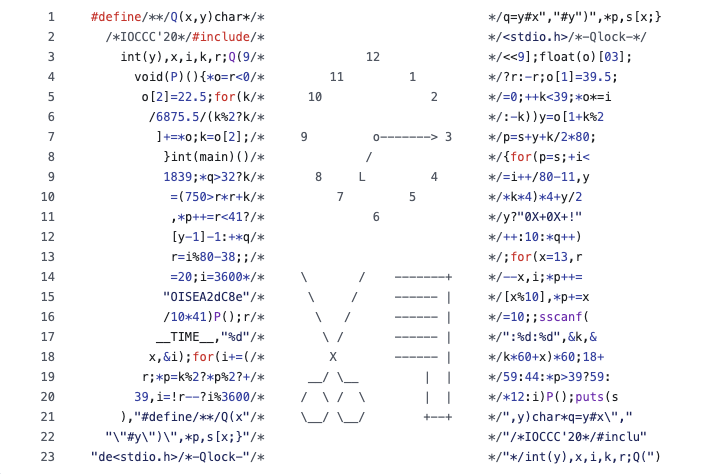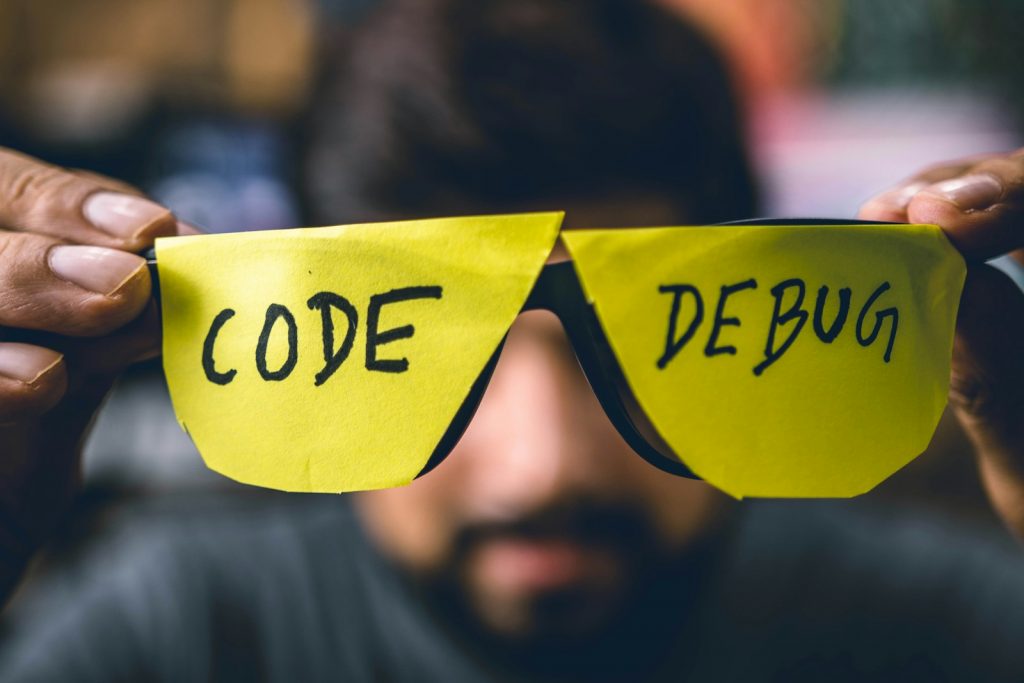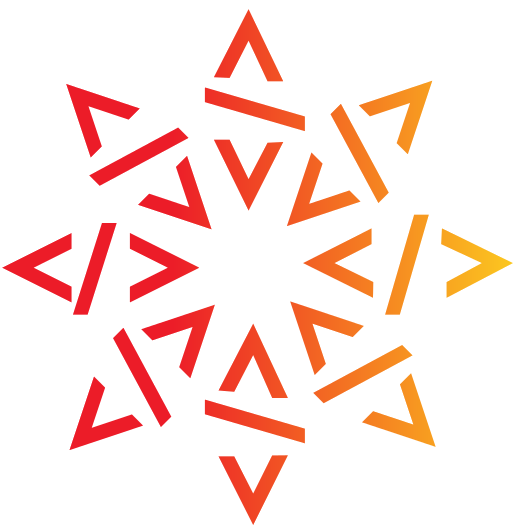Share how your code defines our world for UNESCO Exhibit

From the lines that landed Apollo 11 to the algorithms that built the web, source code is the silent architecture of our civilization. It’s more than logic; it’s a profound human artifact, revealing history, culture, and artistry. For the 10th anniversary of Software Heritage in 2026, we’re putting code’s untold stories in the spotlight at the UNESCO Headquarters in Paris.
We need your help to make it happen – we’re looking for contributors to share their own code stories for this exhibit, which will highlight how crucial it is to save our digital history.
What makes this exhibit different? We’re taking an unusual approach: treating source code as the main event, not just background material. It goes back to something wise Harold Abelson said in 1984: “Programs must be written for people to read, and only incidentally for machines to execute.” That idea inspires us, because we see source code as so much more than its technical function. It’s a rich tapestry of meaning—revealing the creator’s intent, reflecting its historical, social, and cultural moment, and even showing off personal style, creativity, or aesthetic choices.
Here’s where you come in: each poster will feature a different contributor, sharing their take on a source code snippet they’ve chosen. We’re looking for all sorts of voices—from computer scientists and humanities scholars (think historians, philosophers, linguists) to activists, artists, and beyond. This variety is key to showing just how many ways source code can be understood and appreciated.

What stories does code tell?
Source code as historical testimony
Think of code as a witness to history. We’re looking for contributions that spotlight code as a historical artifact—whether it’s a monumental piece like the Apollo-11 lunar landing equations or those amazing, grassroots creations found in old hobbyist journals that truly capture the DIY spirit of early computing.
Source code as a mirror of society
Code isn’t created in a bubble. It’s deeply embedded in our social structures, carrying all the biases, norms, and assumptions of its time. We’d love to see how source code reveals the values, politics, and even the inequalities of the societies that produced it.
Source code as a cultural artifact
Just like a great book, a piece of music, or a painting, source code can be appreciated for its sheer expressive and creative power. This theme is all about exploring code as a medium of human expression—diving into its aesthetics, rhythms, structures, and the unique “voice” of its author.
Ready to contribute?
Our exhibition committee (you’ll find them listed below) will be reviewing proposals. We’re keen to see your original ideas, how they connect with our main themes and the overall quality of what you share.
This exhibit aims to reflect the diversity that shapes the world of code. So, we especially encourage ideas from anyone in an underrepresented group in tech or culture. We want to showcase the varied individuals and perspectives behind source code, past and present.
Submit your proposal to sourcecode-exhibit@inria.fr by September 8, 2025.

What to submit
You’ll start by proposing a title for your submission. Don’t worry, we can always refine it together during the editing phase.
- A source code snippet
Submit the source code excerpt you wish to feature in the exhibit. It may be your code or someone else’s, as long as it’s covered by an appropriate license (see license section below).
- Your source code snippet can be submitted either as an image file (PNG or JPG), a PDF file, or a text file. An image or PDF is most appropriate if you wish to preserve the execution environment or the physical medium on which the code was printed. For example, this could include a screenshot of code running on a specific computer or development interface, or a scan of source code printed in a magazine, etc.
- Alternatively, if your primary interest is in the code itself, it is preferable to submit it as a text file (.txt). In that case, make sure that the code indentation is preserved.
If you’re submitting your source code as an image, please follow these guidelines to ensure adequate image quality:
- Resolution: Ideally, the image should be 300 DPI (dots per inch) or higher, with a minimum size of about 2300 × 3500 pixels (or 20 × 30 cm or 8 × 12 inches).
- Format: Use PNG or high-quality JPG (PNG is preferred for text clarity).
- Compression: Do not compress the image before sending it. Use a file transfer service to preserve quality.
- Framing: Avoid excessive margins or framing in the image.
If you’re unsure about the quality of your image, reach out. In some cases, we may be able to work with lower-quality images or suggest alternatives.
- A caption
Submit a caption for your source code, indicating the source, author, creation date, and license of the code
- Your code’s story
You’ll also include your take (around 300 words). This is where you explain why your chosen code snippet matters—whether it’s for its technical side, historical impact, social context, aesthetic appeal, or even personal relevance.
Right now, we’re more interested in your ideas than perfect phrasing, so feel free to send in an initial draft. If your proposal is selected, our team will work with you during an editing phase to polish your contribution, making sure it’s clear and engaging for everyone, even those new to programming.
- A short biography (max 100 words)
- A brief paragraph describing your background and your connection to source code in your professional or creative work.
Please note that the final exhibition panel will be presented in both English and French. You may submit your contribution in either language—or both. Our team will handle the translation.
Don’t hesitate to reach out to sourcecode-exhibit@inria.fr if you have any questions.
License
The source code you submit must meet one of the following conditions:
- Released under a free/libre open source license (see indicative list below), or
- Either authored by you, or submitted with permission from the original author who has granted you the rights to do so.
Possible license for code files
- MIT License
- BSD 2-Clause / 3-Clause
- Apache License 2.0
- GPL (v2 or v3)
- LGPL
- CC0 (Creative Commons Zero)
Possible license for images/pdf
- CC BY
- CC BY-SA
- CC0
- CC BY-ND
The final exhibition panels will be produced under a Creative Commons Attribution (CC BY 4.0) license. This means they may be reused to extend the exhibition beyond UNESCO’s premises. If needed, contributors can request a more restrictive license, subject to approval.
Key dates
September 8 — Submission deadline
September 30 — Selection
- Selected contributors will be notified at the end of September.
Editorial review
- Our exhibition committee will work with contributors to fine-tune texts and bios, ensuring everything is consistent and clear.
Organizers and exhibition committee
This project kicked off with Software Heritage, a non-profit dedicated to collecting and preserving source code, with support from Inria (the French National Institute for Research in Digital Science and Technology). It’s funded by both Software Heritage and Inria, and proudly backed by the UNESCO Memory of the World Programme.
Exhibit organizers:
- Mathilde Fichen, Doctoral Researcher, National Conservatory of Arts and Crafts (CNAM) and Software Heritage
- Titaÿna Kauffmann, Doctoral Researcher, C2DH, University of Luxembourg
- Camille Picard, Science Outreach Manager, Inria
Exhibition committee, responsible for reviewing proposals and curating the exhibition, includes:
- David C. Brock – Computer History Museum, San Francisco
- Pierre Depaz – Staatliche Hochschule für Gestaltung Karlsruhe
- Valérie Schafer – University of Luxembourg
- Bostjan Spetic – Slovenian computer museum
- Artemis Yagou – Deutsches Museum
The full call for contributions
EN: Source Code Exhibit – Call for proposal.pdf
FR: Expo Code Source – Appel-contribution.pdf
Featured image: ASCII clock by Yusuke Endoh. Winner 2020: Most head-turning category, The International Obfuscated C Code Contest, licensed by Landon Curt Noll, CC BY-SA 4.0
